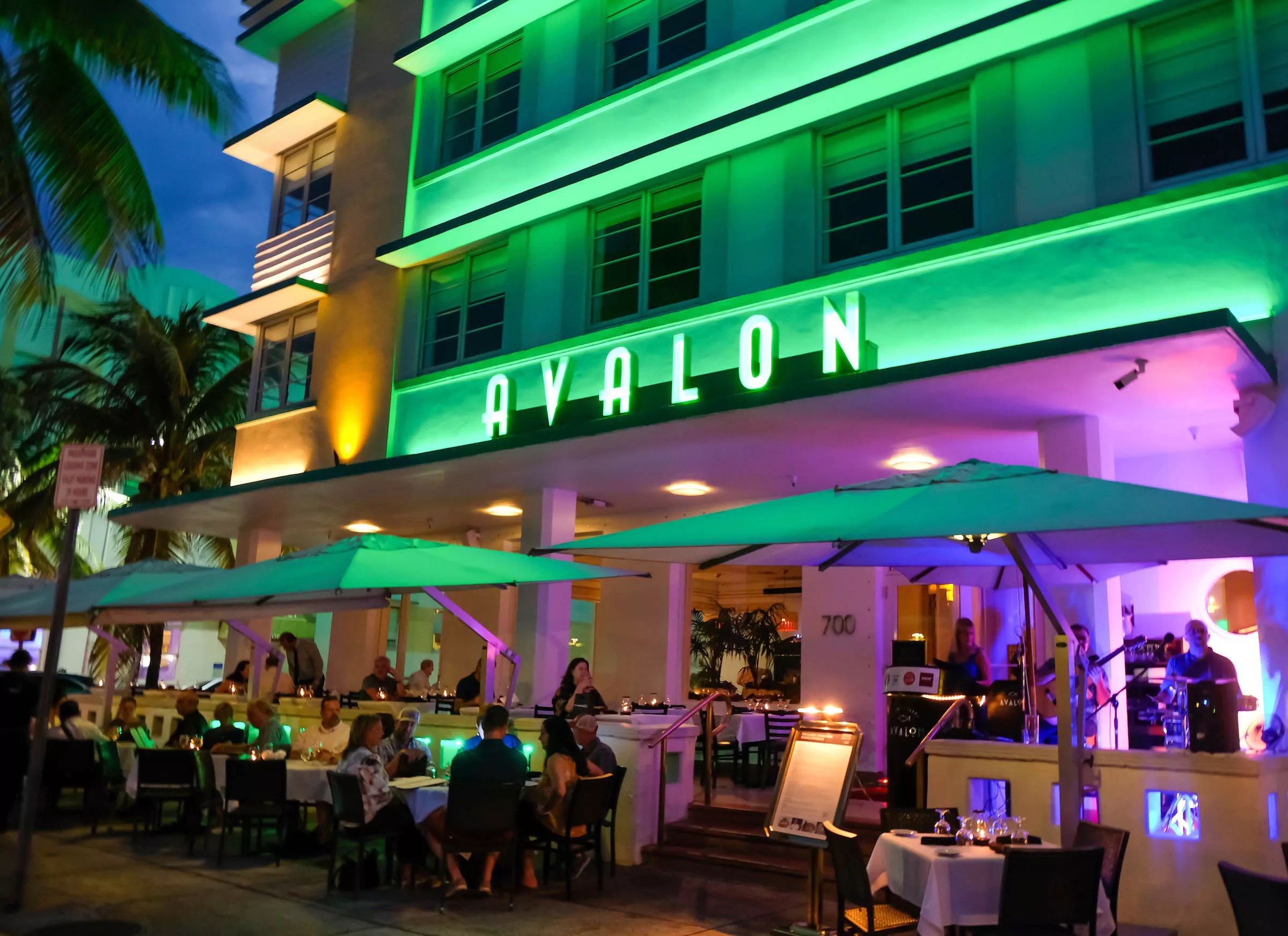
Photo courtesy of A Fish Called Avalon

Audio By Carbonatix
Even as restaurant dining rooms in some parts of Miami-Dade have begun reopening, Miami Beach restaurant owners still have more than a week to figure out how best to incorporate Miami-Dade County Mayor Carlos Giménez’s “New Normal” guidelines into their places of business.
Perhaps the most intractable restriction is the 50 percent limitation on occupancy in order to allow sufficient space for physical distancing. Less space equals fewer patrons, and fewer patrons equals lower revenue. In this regard, restaurants that can accommodate outdoor seating are at a clear advantage. As long as they don’t exceed their maximum legal occupancy, they can fit it as many diners as they can safely social-distance from one another.
To give restaurants a fighting chance, the city will close some streets to traffic, allowing for more outdoor seating and creating de facto pedestrian malls.
At the city’s May 13 commission meeting, the city proceeded with a “Restaurant Recovery Outdoor Seating Pilot Program” that would close some streets to vehicular traffic and in some instances expand seating beyond sidewalks.
Miami, make your New Year’s Resolution Count!
We’re $16,000 away from our End-of-Year campaign goal, with just a five days left! We’re ready to deliver — but we need the resources to do it right. If Miami New Times matters to you, please contribute today to help us expand our current events coverage when it’s needed most.
The first street tapped for the project: Ocean Drive.
The program was spearheaded by Commissioner Michael Góngora, who proposed the experiment after reading how the city of Tampa had done something similar.
“It’s just a good idea to give restaurants more expansive use of sidewalks and public areas where they can put tables out” and still meet physical-distancing requirements, Góngora says.
There’s also the comfort factor, given that most of the populace has spent the past two months-plus staying home in order to stay healthy. “I’ve spoken with many people who say they prefer to eat outdoors for the foreseeable future,” Góngora says.
Under the rules of the pilot program, restaurateurs can apply for a special permit through the Miami Beach Public Works office – a process Góngora promises will bypass the red tape. “We don’t want people to hire an architect or anything. An overwhelming amount of Miami Beach restaurants operate sidewalk cafes. This would just be a matter of expanding the area. I want Public Works to work with the restaurant owners.”
Góngora notes that the city has already closed Ocean Drive to traffic and opened it for public use and exercise. Beginning May 27, there’ll also be outdoor seating. The plan calls for Ocean Drive to be pedestrian-only from Fifth Street to 15th Street through September.
He even allows himself to entertain the possibility that the closure might lead to a lasting change for the better.
“You’ve gotta look for a positive out of this negative time,” says the commissioner. “Ocean Drive is a lightning rod: A lot of people love it and a lot of people say the quality has gone down. We talked about making some kind of change to Ocean Drive for years. This is an opportunity to bring people back and show them how beautiful it is to sit on Ocean Drive.”
Beyond its showpiece stretch, Góngora says the city is looking at closing some of Washington Avenue, and also the side streets along Lincoln Road and Sunset Harbour. “It’s important for us to implement this program in other areas too,” he’s quick to add. “There’s opportunity in North Beach, as well.”
The city will address details regarding the plan this Friday, May 22, but Góngora expects the program to be in full effect by the time restaurants begin to reopen on May 27.
“I’d like to see this up and running on day one,” says the commissioner.
In the meantime, Góngora urges restaurateurs to think of ways to expand their footprint and get the ball rolling. “If they have a sidewalk, there’s an opportunity,” he says. “Restaurateurs should be looking around at anything – a parking lot, a street. We’re going to help businesses succeed with outside seating until it’s safer to eat inside again.”